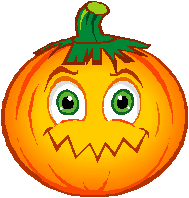The kids are back in school, the days are becoming just a little bit shorter and maybe a slight cooler. You may be seeing pumpkins and Halloween candy in your local market. 
It’s obvious, fall is approaching, and with it…. cold and flu season, UGH! ![]()
 Things to know about flu (and colds):
Things to know about flu (and colds):
Colds and flu share many symptoms, but fever, body aches, extreme tiredness, and dry cough are more common and intense in cases of the flu. Whereas, colds tend to produce a runny or stuffy nose.
Tests during the first days of illness can detect influenza and may be indicated for those considered high risk to flu complications.
Seniors and people with chronic health conditions—like asthma, diabetes, and heart disease—are at a higher risk for serious complications from the flu.
Based on research predictions, the upcoming season's flu vaccine will protect against these three influenza viruses: an influenza A (H1N1) virus, an influenza A (H3N2) virus, and an influenza B virus.
Even though the timing and duration of flu seasons can vary, for those living in the US, winter is the time typical time with some outbreaks as early as October. Most of the time flu activity peaks in January or later.
You can be contagious 1 day before any flu symptoms occur and you may be able to pass on the flu to someone else up to 5 to 7 days after becoming sick.
It will take approximately two weeks after vaccination for your body to develop the antibodies to protect against influenza virus infection.
Everyone 6 months and older should get a flu vaccine each year.
 Flu and Pneumonia Stats:
Flu and Pneumonia Stats:
According to the Centers for Disease Control and Prevention:
In a 30-year study period, from 1982-2012, flu activity most often peaked in February (14 seasons, or 47% of the time).
In a 30-year period, from 1976-2006, annual flu-associated death estimates ranged from a low of about 3,000 to a high of about 49,000 in the US.
The 2012 season deaths related to flu and pneumonia were the highest in nearly a decade, and people 65 years and older accounted for half of all flu-related hospitalizations.
 So let’s refresh our memories on the coding and reimbursement guidelines for Influenza Virus and Pneumococcal vaccinations.
So let’s refresh our memories on the coding and reimbursement guidelines for Influenza Virus and Pneumococcal vaccinations.
If you are not submitting the correct diagnosis and procedure codes you will not receive the proper claim reimbursement. 
 The vaccine procedure code should be chosen based on the description of the drug and the age of the patient.
The vaccine procedure code should be chosen based on the description of the drug and the age of the patient.
 Each vaccine code should be billed with the appropriate administration code as well.
Each vaccine code should be billed with the appropriate administration code as well.
The following procedure and diagnosis codes are used for influenza virus vaccinations:
|
CPT/HCPCS Code |
Description |
|
90654 |
Influenza virus vaccine, split virus, preservative free, for intradermal use |
|
90655 |
Influenza virus vaccine, split virus, preservative free, for children 6-25 months of age, for intramuscular use |
|
90656 |
Influenza virus vaccine, split virus, preservative free, for use in individuals 3 years and above, for intramuscular use |
|
90657 |
Influenza virus vaccine, split virus, for children 6-25 months of age, for intramuscular use |
|
90660 |
Influenza vaccine, live, for intranasal use |
|
90662 |
Influenza virus vaccine, split virus, preservative free, enhanced immunogenicity via increased antigen content, for intramuscular use. (High Dose) |
|
Q2034 |
Influenza virus vaccine, split virus, for intramuscular use (Agriflu) |
|
Q2035 |
Influenza virus vaccine, split virus, when administered to individuals 3 years of age and above, for intramuscular use (Afluria) |
|
Q2036 |
Influenza virus vaccine, split virus, when administered to individuals 3 years of age and above, for intramuscular use (Fluluval) |
|
Q2037 |
Influenza virus vaccine, split virus, when administered to individuals 3 years of age and above, for intramuscular use (Fluvirin) |
|
Q2038 |
Influenza virus vaccine, split virus, when administered to individuals 3 years of age and above, for intramuscular use (Fluzone) |
|
G0008 |
Administration of influenza virus vaccine |
|
Diagnosis Code |
Description |
|
V04.81 |
Influenza vaccination with dates of service 10/1/2003 and later |
|
V06.6 |
Influenza and pneumococcal vaccination (Report this code when the purpose of the visit was to receive both vaccinations during the same visit) |
The following procedure and diagnosis codes are used for pneumococcal vaccinations:
|
CPT/HCPCS Code |
Description |
|
90669 |
Pneumococcal conjugate vaccine, polyvalent, for children under 5 years, for intramuscular use |
|
90670 |
Pneumococcal conjugate vaccine, 13-valent, for intramuscular use |
|
90732 |
Pneumococcal polysaccharide vaccine, 23-valent, adult or immunosuppressed patient dosage, for use in individuals 2 years or older, for subcutaneous or intramuscular use |
|
G0009 |
Administration of the pneumococcal vaccine when no physician fee schedule service on the same day |
|
Diagnosis Code |
Description |
|
V03.82 |
Pneumococcal vaccination |
|
V06.6 |
Pneumococcal and influenza vaccination (Report this code when the purpose of the visit was to receive both vaccinations during the same visit) |
 Coding Hint: Based on CCI edits, when performing an unrelated E/M service on the same date as the vaccination, append a “25” modifier to your E/M service procedure code to prevent denials of your immunizations.
Coding Hint: Based on CCI edits, when performing an unrelated E/M service on the same date as the vaccination, append a “25” modifier to your E/M service procedure code to prevent denials of your immunizations.

CMS has available on its website numerous resources to assist providers and will be posting Season 2013-2014 updates to their website soon.
Facts on Influenza, Pneumococcal, and Hepatitis B Immunizations: http://www.cms.gov/Medicare/Prevention/Immunizations/index.html?redirect=/Immunizations/
The 2012- 2013 Immunizers’ Question & Answer Guide: http://www.cms.gov/Medicare/Prevention/Immunizations/Downloads/2012-2013_Flu_Guide.pdf
Current pricing information: http://www.cms.gov/McrPartBDrugAvgSalesPrice/10_VaccinesPricing.asp#TopOfPage
If you are not administering flu shots, recommend this free tool, HealthMap Vaccine Finder to help your patients locate a local vaccine provider. 


